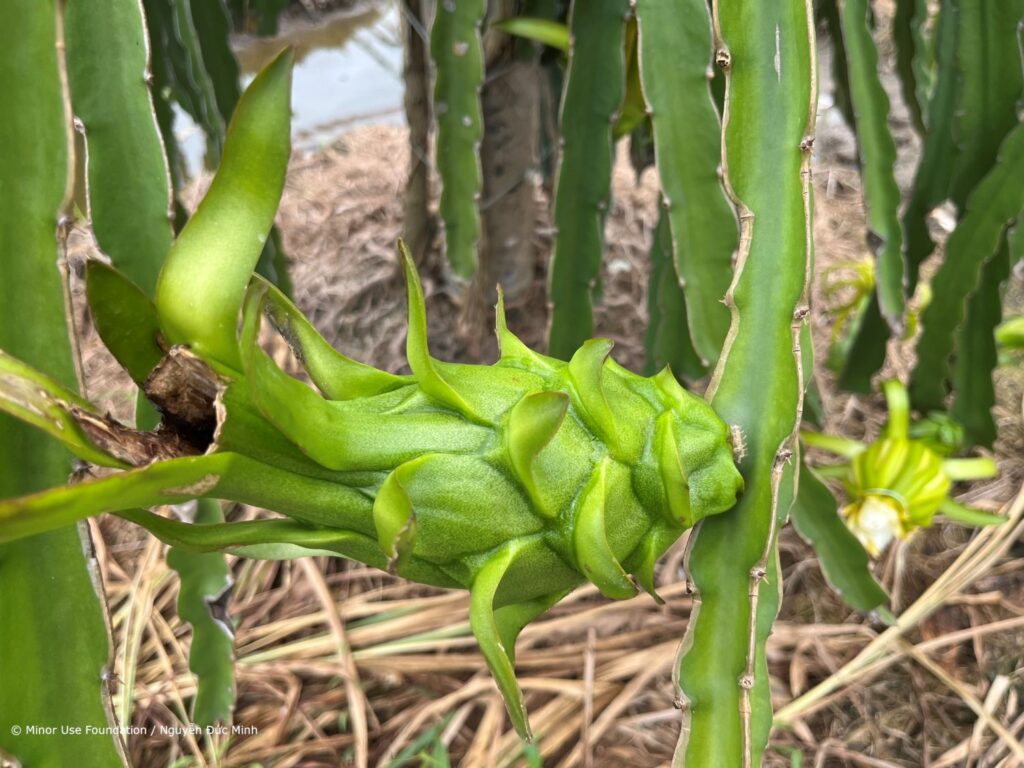What are the major pest management challenges for small-scale farmers? The SIANI expert group Tropical Fruits Liaison, led by the Minor Use Foundation, is trying to identify needs and knowledge gaps as well as potential solutions. The first step is a global consultation where researchers, regulators and industry stakeholders work out priorities together – here the group’s coordinator Sasireka Rajendran explains the process.
The Minor Use Foundation recently launched a global effort to understand the most pressing needs in minor use crop protection, which is also highly relevant for the small-scale farmers at the core of the SIANI expert group the Minor Use Foundation leads. The SIANI expert group Tropical Fruits Liaison hopes that more smallholders will be able to grow tropical fruits, which could improve nutrition and supply welcome additional income, but the prevalence of crop pests is often a significant obstacle.
Yet the situation is complex, and the Minor Use Foundation draws on input from around the world to get an up-to-date view. The priority setting process occurs every three years as a strategic, data-driven approach designed to identify and address the most critical needs in minor use crop protection globally. It brings together input from growers, researchers, regulators, and industry stakeholders to guide resource allocation and project implementation across multiple regions and cropping systems for the next three years.
The structured effort will not only support minor use pesticide registration but also strengthen global harmonisation and sustainable agricultural practices.
The SIANI expert group will be reviewing and validating the results and guiding the Minor Use Foundation in choosing the projects that are best positioned to deliver these trade, food security, and environmental benefits. This external perspective ensures that the final list of priorities not only addresses technical gaps but also aligns with global development and sustainability frameworks.
Open call for nominations
As the first phase of Priority Setting 2025, the Foundation issued an open global call for nominations, inviting stakeholders to submit crop-pest combinations requiring regulatory or research support. This open call is critical to ensuring a bottom-up, demand-driven process that reflects real-world pest management challenges.
The open call yielded an impressive response—approximately 5,000 nominations were received from diverse regions and cropping systems, reflecting the continued global demand for support in addressing pest and disease pressures on speciality and minor crops.
Categorising needs: six types of requests
To facilitate review and prioritisation, nominations were classified into six key categories, each corresponding to a different regulatory or implementation pathway:
- New Solutions – Identifying novel crop protection technologies or Integrated Pest Management (IPM) strategies for emerging or resistant pest challenges.
- Codex MRL Requests – Supporting submissions to the Joint Meeting on Pesticide Residues (JMPR) to obtain international Codex MRLs, enabling trade and regulatory alignment.
- Periodic Review – Addressing data gaps and compliance needs for re-evaluation of older chemical uses under evolving regulatory frameworks.
- Local Registration – Facilitating the national registration of crop protection products through data generation and regulatory support.
- Special Projects – Enabling bespoke initiatives for high-impact or under-represented issues in speciality crops requiring cross-cutting expertise.
- iMRL Requests – Addressing MRL requirements for countries not covered by Codex, supporting international market access and food safety.
These categories help us understand what kind of action is needed and where it should be focused.
Analysing the data
With thousands of nominations in hand, our team is now hard at work reviewing and analysing all the submissions. The Foundation is currently conducting comprehensive data analysis of the submitted nominations to identify high-frequency pest-crop combinations, regional trends, and priority areas for intervention. The analysis includes clustering similar requests and quantifying the need by region and crop type.
Beyond frequency and geographic spread, the Foundation applies a multi-criteria evaluation framework to identify projects with the highest potential impact. In addition to alignment with the six categories, the following strategic outcomes are assessed:
Trade benefits – Will the project facilitate market access, harmonise MRLs, or reduce trade barriers?
Food security – Will the project improve access to effective pest control tools that protect crop yield and reduce post-harvest losses?
Environmental impacts – Will the project reduce reliance on high-risk products, promote IPM, or contribute to climate-smart agriculture?
This analysis helps us identify the most requested pest-crop combinations and determine where global efforts could have the biggest impact.
Validating the priorities
Following data analysis, the emerging priorities will undergo validation through expert consultation with the Tropical Fruits Liaison Team, the MUF Board and the advisory council, composed of global and regional specialists, to ensure that the needs are appropriately integrated into the final priority list that aligns with MUF’s mandates and partners’ interests.
The SIANI expert group will play a crucial role at this stage. As representatives of smallholder farmers and local agricultural communities, SIANI experts ensure that the priority-setting process remains grounded in the realities of farming systems. Their review and validation of the priorities provide an essential perspective on how these projects can best support the needs of smallholder producers and promote inclusive development. Moreover, by helping the Foundation steer its activities, the SIANI group enhances the legitimacy and impact of the final project portfolio, ensuring that it resonates with real-world farming challenges.
Our goal is to announce the priorities that will drive our work agenda for the next three years by the end of June 30, with regional workshops to discuss the results in July and a side event following the completion of the 2025 Codex Committee on Pesticide Residues (CCPR).
